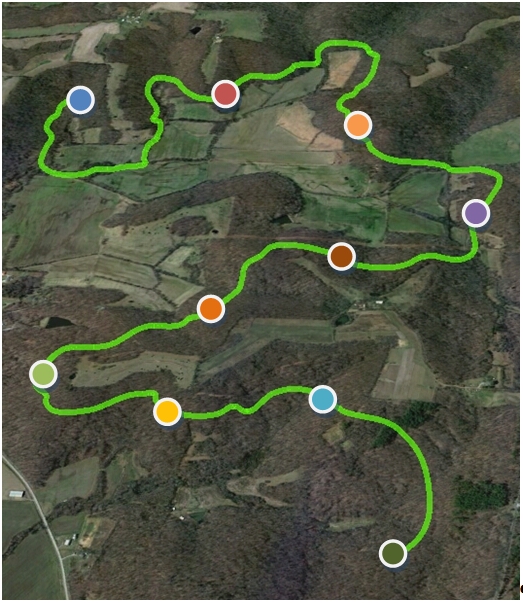Incorporate Connectivity Assessment Into Management Plan
STEP 10: INCORPORATE CONNECTIVITY ASSESSMENT INTO LARGER DECISION-MAKING PROCESS
Outcomes or Products
Your connectivity assessment is integrated into your decision-making or planning process.
Prerequisites
STEP 3: Identify species to be assessed
STEP 4: Characterize biology, ecology of species to be assessed
STEP 6: Identify the connectivity modeling tool(s) that will be used
STEP 7: Obtain or build inputs to connectivity modeling tool(s)
Description
In this final step, you will determine how to incorporate the results of your connectivity assessment into the planning or decision-making process that it is intended to inform.
Skill Sets or Expertise Needed
- General planning background
- General natural resource management or conservation
- Understanding of spatial modeling and its limitations
- Biological or ecological expertise in the species or systems to be assessed
How to Conduct This Step
In some cases, your connectivity assessment may be the main focus of your overall decision-making process. However, connectivity assessments are more frequently part of a broader decision-making or planning process. Results might be incorporated into an Environmental Impact Statement, a natural resource agency's management plan, or a non-governmental organization's conservation priorities. This step focuses on incorporating connectivity into broader plans, such as conservation, resource management, or infrastructure plans. In this case, the relevant aspects of a plan are a set of maps that portray the distribution of conservation features of interest, their condition, and management or other conservation actions with supporting documentation.
Determine how your connectivity results should be represented among the many potential conservation features in the larger plan. Depending on the original goals of your assessment, your results may represent a part of a species habitat (e.g., the migratory habitat between summer and winter range for mule deer); a connection for many different species that is represented as its own feature such as a riparian corridor; a series of connections via free-flowing streams; or a more general ecosystem process such as gene flow for many species through a landscape represented by landscape permeability. In spatial planning, it will be important to carefully consider the spatial representation of your connectivity results to ensure they can be used to identify concrete management or conservation actions in subsequent planning work. Using the example of mule deer again, the larger planning process should recognize the need to retain the connection between summer and winter ranges (as well as the ranges themselves), including considerations of minimum width and allowable disturbance within the connection; otherwise, the entire population may not be viable because the animals cannot travel between their winter and summer ranges.
In addition to the connectivity results showing corridors, networks, or other connections, it is important to represent the habitat areas (or points) that served as inputs to the model in the larger plan as well.
Identify the actions that are needed for each area or feature in your plan to meet the conservation or management objectives. For the connectivity component, this involves determining whether the connection is currently functioning as desired and whether it is threatened from future conversion or stressors. The connectivity represented may indicate a good quality connection that should be conserved; an impeded connection that should be improved (e.g., a connection that has become constricted – a “pinch point” – or just generally degraded in quality/integrity); or a complete barrier to connectivity (e.g., a highway or a dam) that requires wholesale restoration or mitigation action. Other information about current protection status (how well any particular area is protected from conversion or change in land or water use) and the potential for future stressors (new land use, invasive species, change in wildfire regime, climate changes, etc.) will help determine conservation strategies or management actions that are applied to particular areas. For example, an area unprotected from land use change or conversion may warrant a change in management status on public land, or acquisition or easement for conservation purposes on private land. Areas that are expected to experience new stresses (e.g., change in wildfire regime) may be marked for a mitigation action (e.g., proactive fuels treatment).
Incorporate expected climate change into your plan. In the past, systematic conservation planning processes assumed a fairly static environment in terms of where biodiversity could be found or would be suitable. In recent years, planning processes (see Resources below) have been incorporating climate change vulnerability assessment and adaptation into traditional resource management and conservation planning. For connectivity, this means the recognition that sources and destinations for connectivity may likely change and thus the pathways of connectivity may change in location or importance. The management or conservation actions outlined in plans therefore may need to be specified for particular timeframes, with an approximate schedule for routine updates as conditions unfold. A more forward-looking approach accounts for the probability of future change when specifying near term actions. For example, a new road may be routed to avoid current high value habitat and connections but it also should be assessed against potential future shifts in these areas to avoid precluding climate change adaptation of those features.


